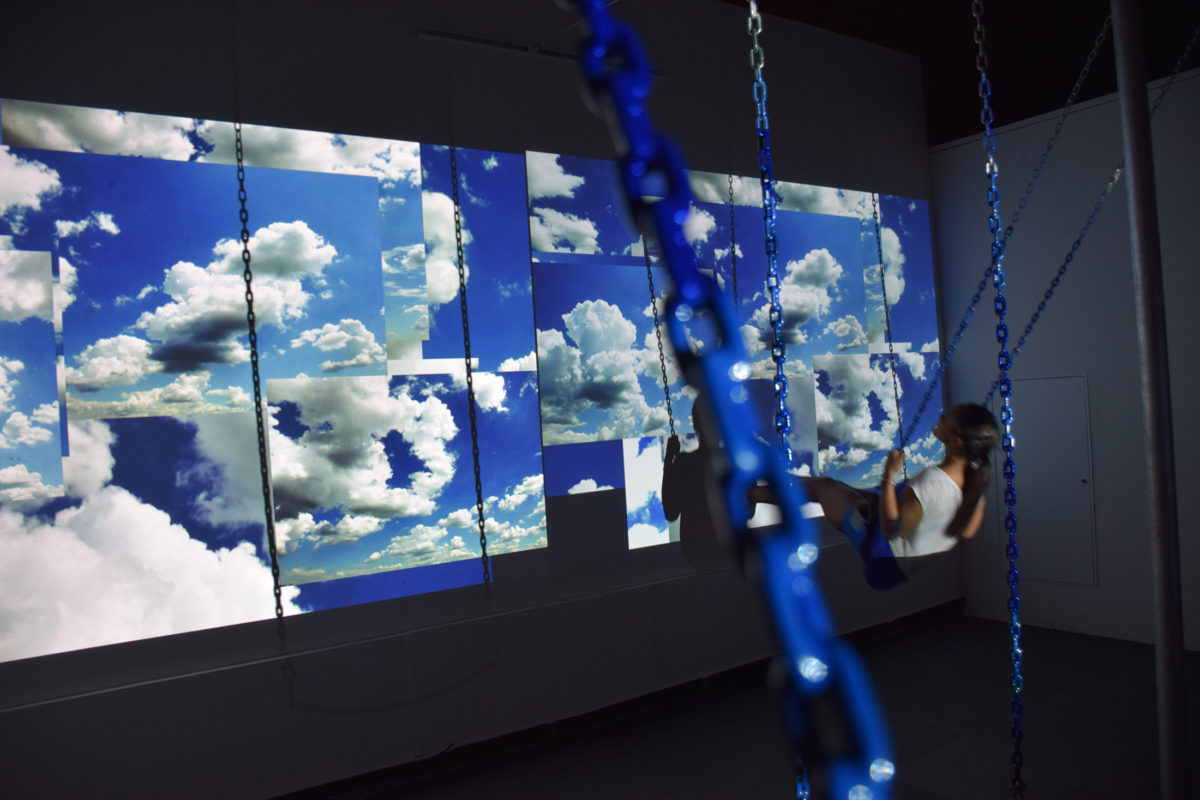Play Time
Kim Harty
Play Time was an exhibition that took over the Toledo Museum of Art with its immersive, interactive, and tactile installations. The summer show, which ran from Memorial Day (May 22) to Labor Day (September 6), 2015, invited museum visitors to experience, interact with, and activate sculptures, spaces, installations and games throughout the museum. Play Time’s ambition was to engage with the public, and in doing so, extend the idea of art in all directions to encompass the multiple conceptions of temporality, stability, and malleability. During the exhibition I found myself reconsidering my role as both an artist and a viewer.
I was asked to participate in Play Time by constructing a large temporary glass sculpture outside the Glass Pavilion. Toledo, as its residents well know, is nicknamed the Glass City for the handful of glass companies founded there in the nineteenth century and its status as the mythological birthplace of the American Studio Glass Movement. The TMA’s monument to this local history is the Glass Pavilion. Designed by Tokyo-based SANAA, Ltd, recipients of the 2010 Pritzker Prize for Architecture, the Pavilion is a diaphanous construction of curved transparent walls that show off the museum’s extensive glass collection and is home to its onsite hot glass studio, where the public can watch artists working with the molten material.
I was invited to create a process-based piece, Glass Mountain, onsite for the public. Glass Mountain is a 8 x 12 x 5” landscape made of delicate glass threads that form the mountainous topography. Its construction took place on the outside lawn of the pavilion, where we installed a furnace that I helped build during a 2012 residency at the TMA that commemorated the 50th anniversary of the first Studio Glass workshop. This seminal 1962 workshop was made possible by a modest, but critical, technological development: the creation of a small furnace. By creating a small glass furnace, artists were able to take glass out of the factory context and bring it into the artist’s studio. However, when one walks into a glass studio, its architecture can be overwhelming: benches, yokes, torches, hoses, flames, tables, and steel constructions constrict modes of moving and of thinking into strict patterns and parameters. My objective in creating Glass Mountain was to undo this constricted thinking and treat the space around the furnace like an idealized studio – a white cube or a blank canvas. To do this I upended conventional glass processes by eschewing the use of any specialized tools or equipment usually considered necessary to make a glass. I was the one playing at Play Time and play it seems, necessitates an empty space that a person is compelled to fill through imagination and improvisation.
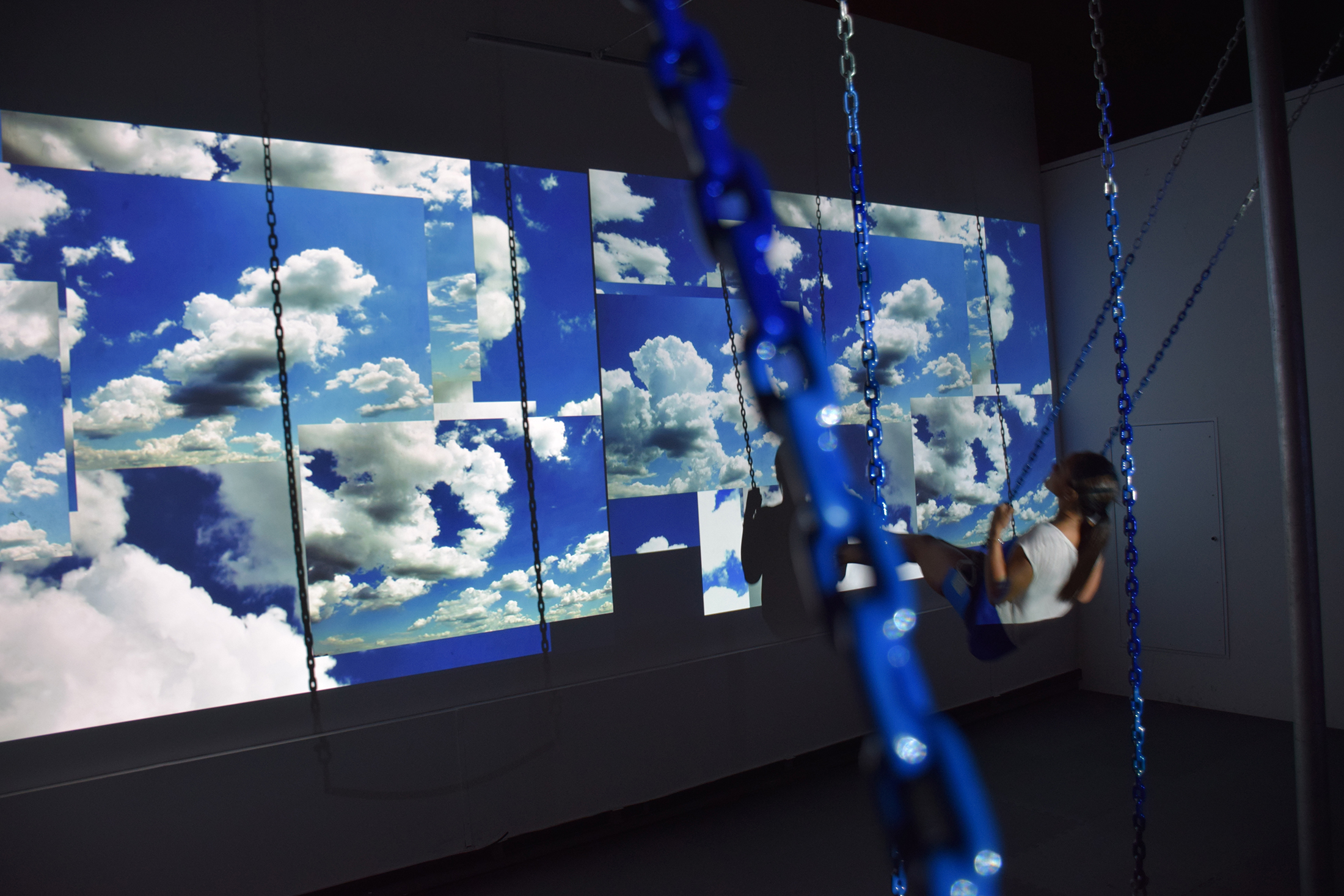
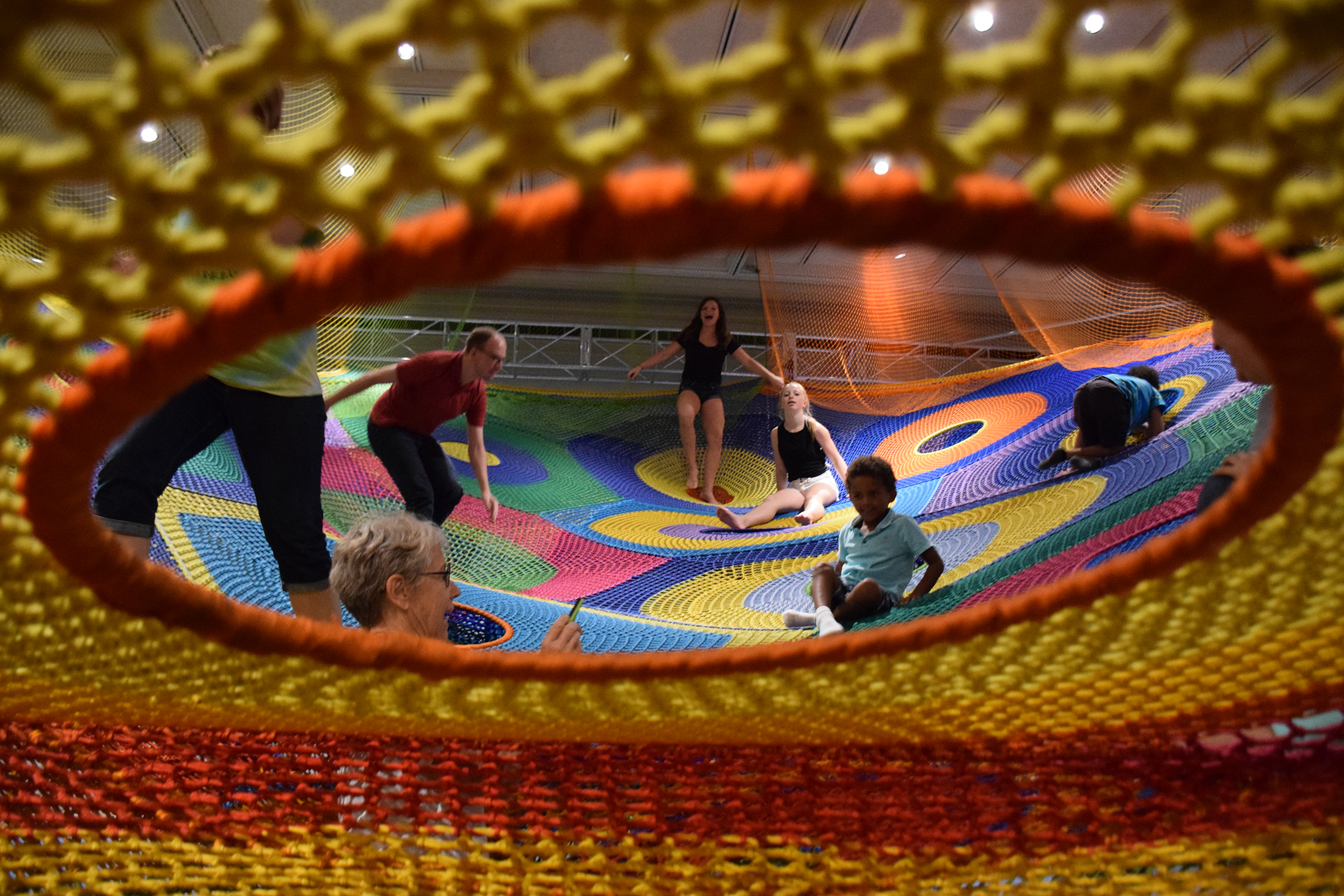
All images by Kim Harty, courtesy of the artist.
Before my demonstration began, I had time to visit Play Time, which was primarily situated in the main museum. I had been to the TMA many times and knew the glass collection well, but the main museum with its Greek Ionic façade and hushed interior had always been opaque to me, never leaving a solid impression on my mind. This visit was completely different. My first stop was the centerpiece of the show: a giant crocheted web titled Harmonic Motion by Toshiko Horiuchi MacAdam and Charles Richard MacAdam. Viewers were invited to take off their shoes and climb through interior pockets of colorful woven fabric, which transports them to the top of a taut sloping landscape. Although the proposition of the piece seemed simple, even a little obvious (what’s not to like about a huge colorful playground?), my experience of the work was surprisingly exhilarating. Once I was able to crawl through the subterranean pockets, squishing my body in all directions pushing and pulling with my limbs, I was overcome with the fleeting sense of childlike discovery. There was sentimental longing coupled with earnest joy for the play time the piece had granted me. Once I was on top of the levitating web, possibilities seemed endless with what I could do in the this space, and laying in it like hammock, and snapping instagram photos didn’t quite satisfy my senses. There was a space to fill and the anticipation of filling that space excited me.
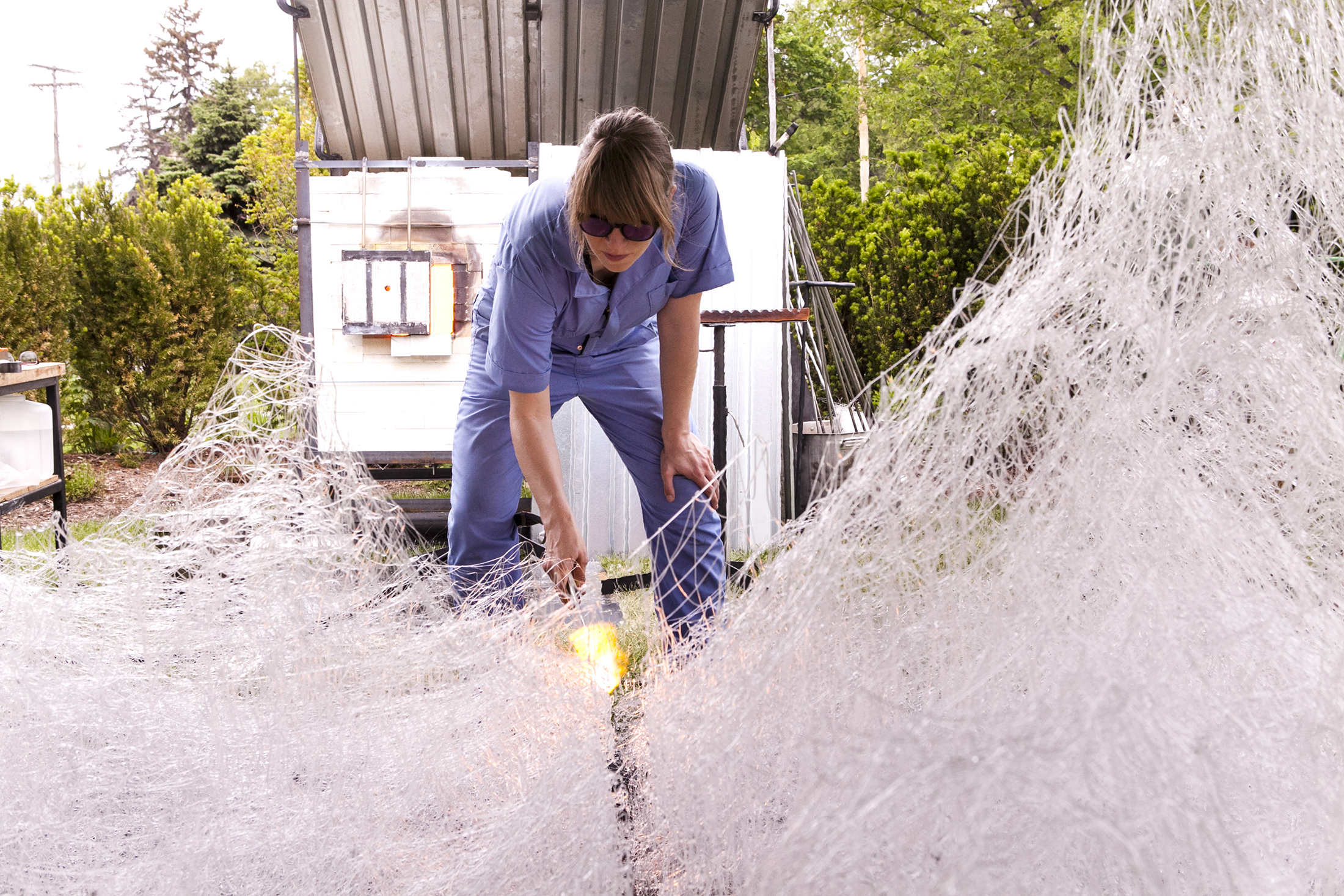
“I was overcome with the fleeting sense of childlike discovery. There was sentimental longing coupled with earnest joy for the play time the piece had granted me.”
After leaving Harmonic Motion I raced to the Swing Space by Jillian Mayer. A museum storage space, which had been turned into a gallery, was immersed in digital video projections of clouds and four swings hung in the middle of the room, inviting viewers to interact. Children were squealing as they swung back and forth, and I patiently waited to give it a try. Again, the simple proposition – swinging in the midst of dreamy projected clouds – was thrilling and almost felt like flying. A friend later remarked to me that swinging in this dark interior room filled with cloud projections was kind of sad, lamenting the satisfaction provided by digital representations of real things and the tyranny of screen-based images. My rational sensibilities agreed, but the visceral experience of the piece left no room for that particular critique; the intensity of the physical experience, and the permissive framing of the show, unburdened me of the need to unpack all the elements of the installation while I was experiencing them.

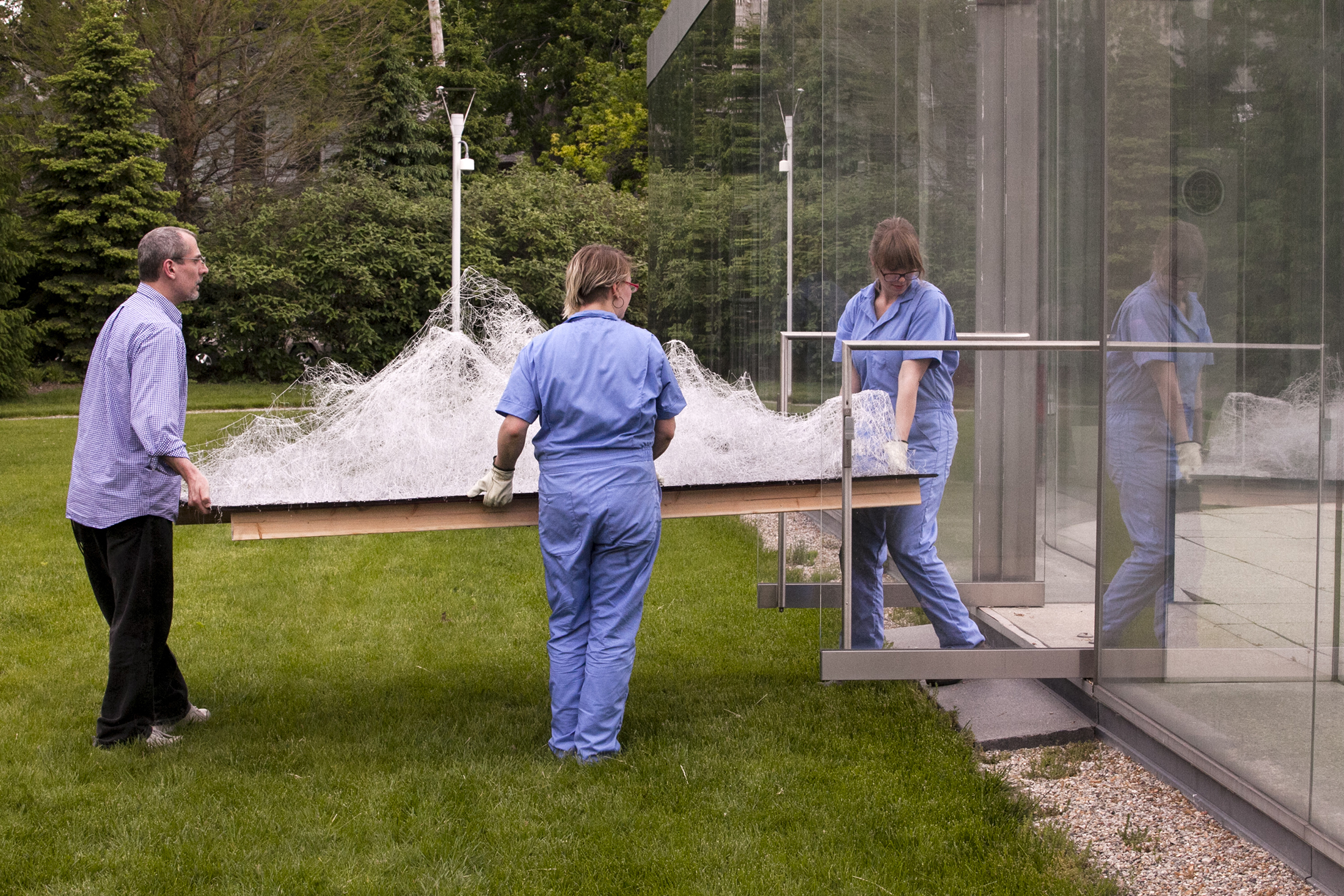
In the following room I found Ground Control by Edith Dekyndt. The piece consisted of a large (maybe 6ft) inflated black ball hovering one inch above the ground in the middle of the room. I presumed it was filled with helium, or some other light gas, and I was stunned at the physical feat the artist had achieved by creating this perfectly hovering sculpture. After looking at the piece for a few moments, the docent began to wave his hands wildly around the ball, as if trying to divine it upward: “Lets see if we can raise it up.” Without touching it, we both began to push the air upwards. Another viewer lay down on the museum floor: “Lets see if you can levitate it over me.” And so we began the levitation – flapping our arms up and down trying to “push” the ball up an over her. Over the course of our very slow project, other docents and museum staff came to join the effort. Before it was all over, we had ten museum workers in their suits and skirts, trying, delighted, to levitate the ball. Its eerie hovering seemed be affected by a supernatural power, even though it was only reacting to the weak air currents we could produce with our flailing limbs.
The pieces I responded to most were the ones that forced me to crawl, swing, and push, though there were many other dynamic elements to the show, including Animation, a tactile wall of stuffed animals created by Stine Kohnke; the immersive sound installation Anything Can Break by Pinaree Sanpitak; chess sets loaned by the Chess Hall of Fame alongside sets you could play, scattered throughout the museum; a weekend screening of Jacques Tati’s comedic films; and paper folding activities for museum visitors based on the work of Vernon Pfiffier.
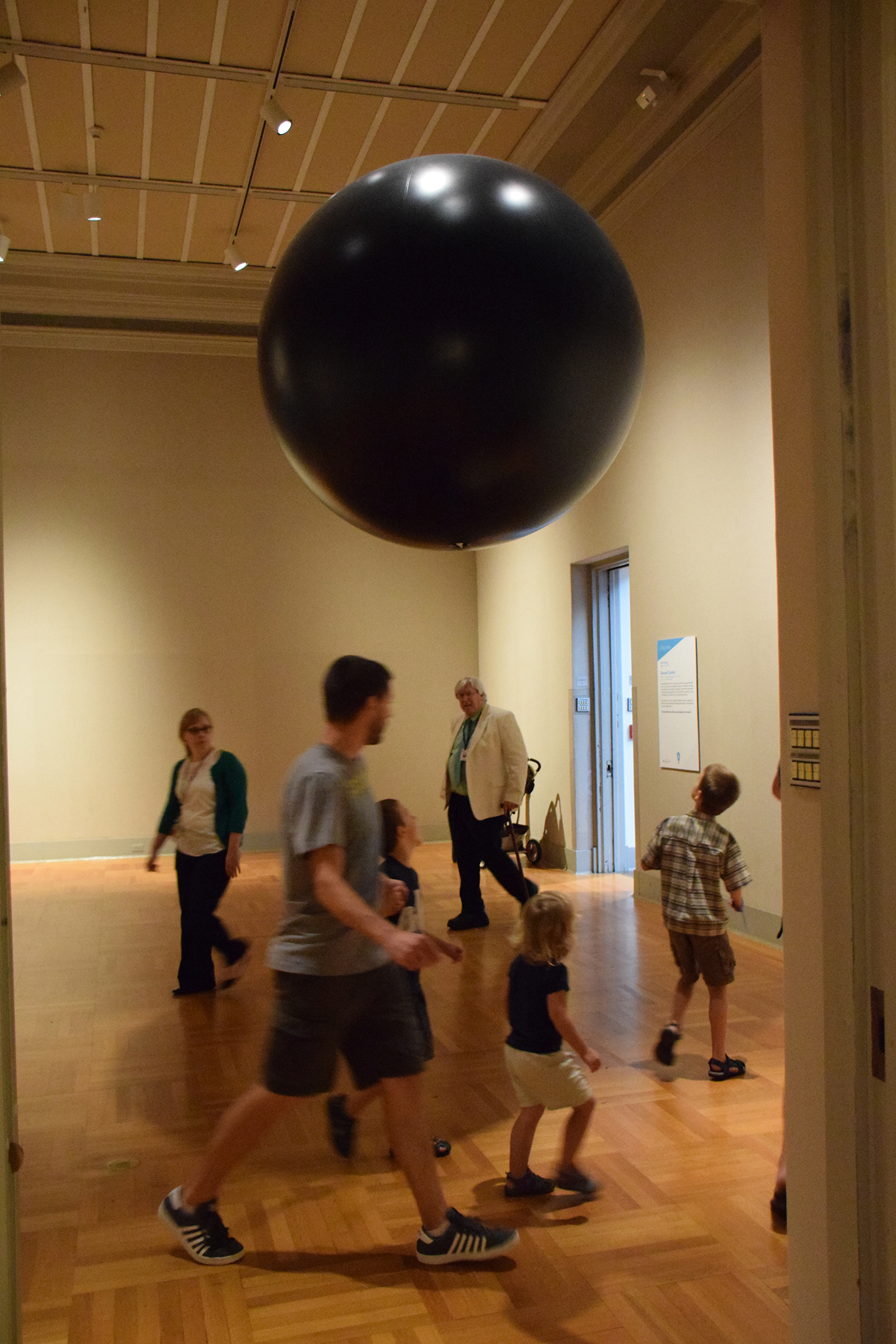
The Old English etymology of the word play refers to exercise, to move briskly, to exert oneself, or to dance joyfully. Bodily engagement is essential to play. The word spirit comes from the latin spiritus, or breath. After experiencing Play Time, it seems that these two ideas – play and the spirit – are appropriately linked. With this definition in mind, its no surprise I was most affected by artworks that required bodily engagement, but at times the shear physicality of the artwork and the interactivity they demanded, subsumed the possibility of critical or theoretical engagement, in the moment. This is perhaps a perceived hazard of artwork that is too playful or fun – it risks being transformed into a playground and its most noble intentions can be obscured. After seeing the exhibition, I think that the distinct impression the exhibition leaves on viewers will allow them to consider and reconsider the pieces long after they have left the show. Experiencing the work was just the first step in a longer process of examining the ideas that were presented, which encompassed everything from challenging how a viewer can and should experience art, the role of art in contemporary society, the purpose of the museum and what type of objects should be in it, and the value of community engagement and museum education. If playful, loud, and fun artworks get hoards of people to a free museum to interact with art, a counter argument for such work is hard to fathom.
My involvement with the show also made me consider my role as a craftsperson in relationship to the notion of play. The movement of the body – responding briskly to the movement of materials, the exertion of force upon a piece or tool, and the resulting exhalation of breath – are all central to creating artwork with one’s hands. It is often both satisfying and productive to follow the rubric of a predetermined process when working with materials, but creating a space for unforeseen and unknown possibilities and embracing states of “play” can lead to new, even radical, discoveries. Whether one occupies the role of viewer or artist, there is an inherent value to creating one’s own rules and living within them, if only temporarily; to creating a blank space, and making a commitment to fill it. I left Play Time considering play as a spiritual pursuit. It’s a willingness to let go of reality, to physically exert oneself in service of one’s imagination, and to be unattached to the results.
